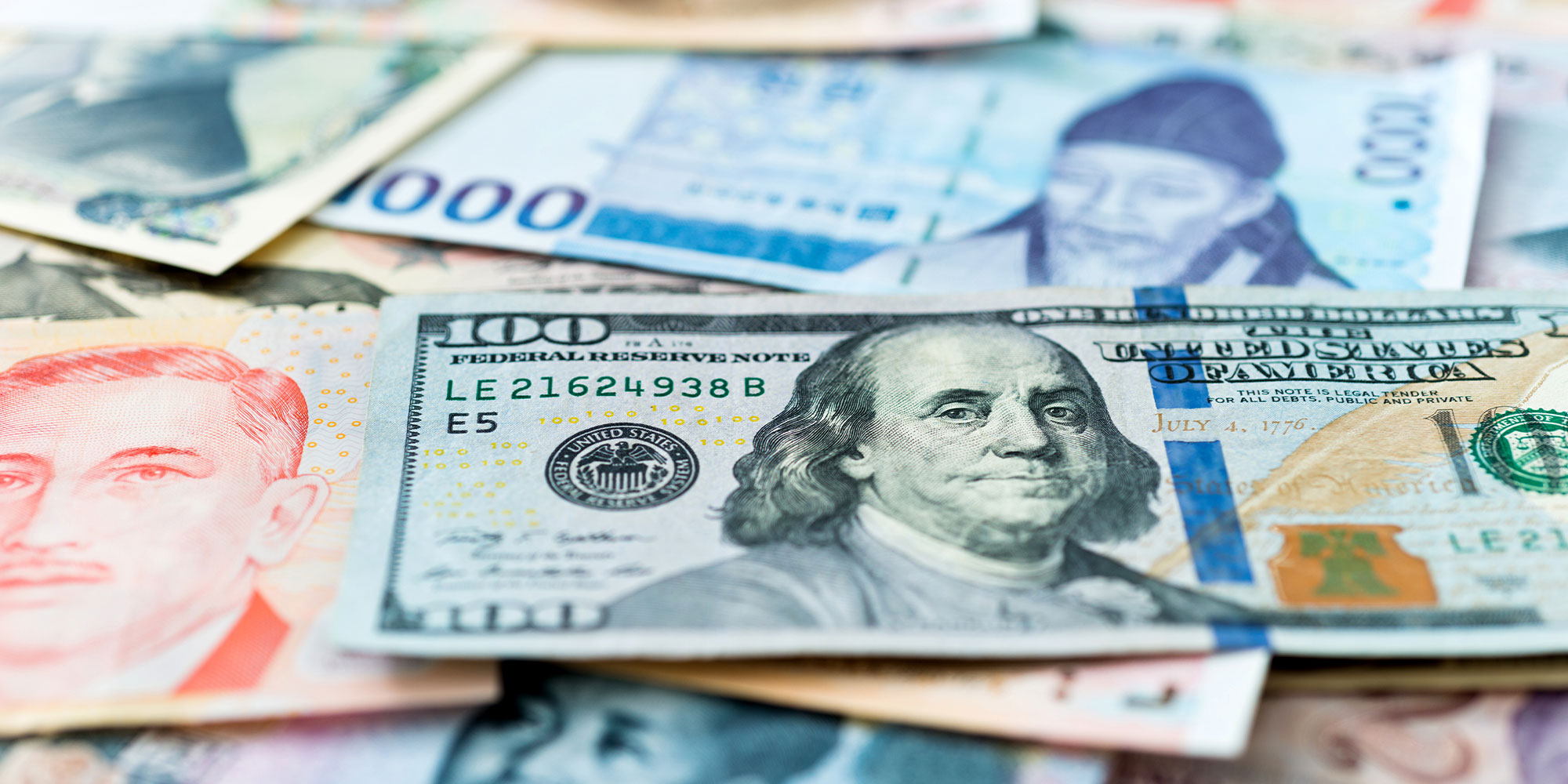5 min read
The U.S. Dollar: The World’s Most Influential Currency
 Kelly Jernigan J.D., CFA® Senior Vice President, Director, Family Wealth Strategy
:
Oct 10, 2024 8:26:10 AM
Kelly Jernigan J.D., CFA® Senior Vice President, Director, Family Wealth Strategy
:
Oct 10, 2024 8:26:10 AM

|
Key Highlights
|
As the world's primary reserve currency, the U.S. dollar plays a pivotal role in the global economy. As a reserve currency, foreign central banks and major financial institutions hold and use U.S. dollars in international transactions, to pay for international debt, or to support their domestic exchange rates. Further, the U.S. dollar is in demand by foreign investors who want to invest in the U.S. capital markets.
Holding a reserve currency can help protect a country’s financial system from currency risk volatility and inflation of its own currency. The International Monetary Fund (IMF), the financial agency of the United Nations responsible for oversight of the international monetary system, recognizes eight reserve currencies, with the U.S. dollar accounting for 58% of the total allocated foreign exchange reserve currencies as of the second quarter of 2024.1
Composition of foreign exchange reserves and the U.S. dollar's global impact (as of June 30, 2024)

How did the U.S. dollar become the world’s primary reserve currency? While there is no international organization that awards reserve status to global currencies, there were a number of factors that played in the U.S. dollar’s favor. When the IMF was established in 1944, the agency was charged with maintaining a currency exchange system focused on the U.S. dollar and gold.2 With the emergence of the U.S. as an economic superpower in the years that followed, the U.S. dollar became more integrated into international trade and the global economy.
In addition, there are generally held characteristics that must be met for a currency to be used for reserves. According to the U.S. Department of the Treasury, these include:
- The size of a country’s domestic economy
- The importance of that economy in international trade
- The size, depth, and openness of a country’s financial markets
- The convertibility of the currency
- If the currency is used as a "currency peg," when one nation sets its currency to a fixed exchange rate of another currency3
Of the reserve currencies recognized by the IMF, the U.S. dollar consistently meets all of these characteristics.
The dominance of the U.S. economy and the role its currency plays in global trade also make the U.S. dollar a safe-haven currency, meaning it typically holds its value or strengthens during periods of economic uncertainty. Countries with safe-haven currencies share common traits, including political stability, strong and resilient economies, deep and liquid financial markets, and stable inflationary environments. The U.S. dollar, along with the Swiss franc and Japanese yen, are among the most recognized safe-haven currencies.4
The U.S. dollar’s pivotal role in the global payments system enhances America’s ability to leverage economic and trade sanctions as a tool in its diplomacy efforts. Trade conducted in U.S. dollars, even between non-American countries, typically involves local, corresponding banks with accounts at the Fed. This allows the U.S. to take swift action against countries that have had economic sanctions leveled against them.5
Potential challenges to the U.S. dollar as reserve currency of choice
The dominance of our currency is based in part on the belief the U.S. pays off its debt obligations. If the U.S. were to default on its Treasury bonds, the perception of the dollar as a safe-haven currency would be damaged, which could lead countries to shift from the U.S. dollar to other reserve currencies.
Some countries, Russia and China in particular, have reduced their U.S. dollar reserves to try to immunize themselves from U.S. sanctions. These actions include increasing their gold reserves and Russia holding more renminbi in its reserves. The renminbi, also known as the yuan, is the official currency of the People’s Republic of China. Still, these actions have not offset the global demand for U.S. dollars, and gold remains at historically low levels of reserves.6
Another test for the U.S. dollar as the world’s primary reserve currency is the emergence of developing economy nations. The geopolitical bloc of emerging market countries known as BRICS (Brazil, Russia, India, China, and South Africa) have explored shifting into other reserve currencies as well as establishing a shared currency similar to the European Union’s euro in an attempt to push back on the U.S. dollar’s dominance. To date, the group has not made progress on either front.7
The role of the U.S. dollar in global trade
In addition to comprising most of the global currency reserves, the U.S. dollar is the currency of choice in international trade. When goods and services are exchanged between countries, companies take on currency risk, which means the value of goods and services traded are impacted by changes in the value of the currencies involved in trading. Many commodities that trade on international markets are priced in U.S. dollars, including oil and natural gas, agricultural products, and metals.
The rise and fall of the value of the U.S. dollar compared to other currencies presents advantages and disadvantages. When the U.S. dollar appreciates in comparison to other currencies, it both lowers the cost of imported foreign goods and makes U.S. exports more expensive. Lowering the cost of imports helps U.S. consumers but pressures U.S. exporters. For example, if ABC Company has a large European market, the company’s sales denominated in euros are worth less when converted to a rising U.S. dollar. It also makes it more expensive for foreign investors to invest in U.S. companies but cheaper for U.S. travelers to go abroad.
In contrast, when the U.S. dollar depreciates, U.S. exports become more price competitive in foreign markets. But a weaker U.S. dollar makes international travel more expensive for American tourists and U.S. firms may deem foreign markets expensive for global business expansion.
Currency movements and the impact on investment portfolios
When the price of the U.S. dollar fluctuates, it can influence the returns of an investment portfolio. A strong dollar could have a meaningful impact on the revenues of U.S. companies that generate a large portion of their sales in overseas markets. Likewise, U.S. investors holding international funds could see their returns influenced by the movement of exchange rates as international stocks are often bought on local exchanges and in local currencies and then converted back into U.S. dollars to calculate their value.
Given the complexities of currency movements and the potential impact on an investment portfolio that contains exposure to overseas stocks and bonds, Commerce Trust suggests working with your wealth management team to discuss how an allocation to international assets might fit within the overall asset allocation of your investment portfolio.
[1] Currency composition of official foreign exchange reserves, International Monetary Fund, September 27, 2024, www.imf.org.
[2] The Bretton Woods Conference, Department of State, www.2001-2009.state.gov.
[4] The role of safe have currencies, OpenMarkets, May 28, 2024, www.cmegroup.com.
[5] The dollar: The world’s reserve currency, Council for Foreign Relations, July 19, 2023, www.cfr.org.
[7] U.S. dollar’s dominance secure, BRICS see no progress on de-dollarization, Reuters, June 25, 2024, www.reuters.com.
The Chartered Financial Analyst® (CFA®) Charter is a designation granted by CFA Institute to individuals who have satisfied certain requirements, including completion of the CFA Program, and required years of acceptable work experience. Registered marks are the property of CFA Institute.
Past performance is no guarantee of future results, and the opinions and other information in the commentary are as of October 1, 2024. This summary is not intended to provide general information only and is reflective of the opinions of Commerce Trust. This material is not a recommendation of any particular security, is not based on any particular financial situation or need and is not intended to replace the advice of a qualified attorney, tax advisor or investment professional.
Diversification does not guarantee a profit or protect against all risk. Commerce Trust does not provide tax advice or legal advice to customers. Consult a tax specialist regarding tax implications related to any product and specific financial situation. Data contained herein from third-party providers is obtained from what are considered reliable sources. However, its accuracy, completeness or reliability cannot be guaranteed.
Commerce Trust is a division of Commerce Bank.
Investment Products: Not FDIC Insured | May Lose Value | No Bank Guarantee
Interested in more insights?
Enter your email to subscribe.
Related Articles




